Observers of the multibillion-dollar Gordie Howe International Bridge project getting underway in the Windsor-Detroit area might expect that the early works construction phase is merely preliminary to the big event.
But they’d be wrong. Michael Cautillo, president and chief executive officer of the Windsor-Detroit Bridge Authority (WDBA), the Canadian Crown Corporation responsible for overseeing a project that may end up with a total price tag of well over $4.5 billion, described over $150 million worth of complex and challenging early works jobs in a recent interview while deflecting broader inquiries into other project controversies.
The project has four components — two ports of entry, in the United States and Canada respectively on 278 acres of land; the six-lane bridge itself that with land approaches from the ports of entry will cover 2.5 kilometres; and a new interchange off the I75 at Detroit.
The project timetable is uncertain at this point but Cautillo said that after the project site is turned over to the winning P3 team after the close of the RFP process, the build will take four years. That might take the opening of the bridge into 2021 or 2022.
Cautillo did not address publicized difficulties in acquiring properties on the Michigan side that could lead to project delays, or project costs, nor did he want to discuss the extended RFP process, preferring to defer to media statements issued by the WDBA.
"I would prefer to stick to the subject at hand because it is a really neat story," said Cautillo. "There are lots of moving parts in this project."
An Aug. 17 progress statement on the early works program listed a $60-million contract that went to Amico Infrastructures last year for work on a four-kilometre perimeter access road at the Canadian port of entry, utility relocations and advance fill placement; work on the U.S. side for electrical utilities relocation and property demolition; and, another recent $50-million
Request for Tender for three contracts relating to the supply of specialized cable and accessories and construction contracts for electrical transmission and distribution networks.
Other projects related to utilities relocation have pushed the total value of contracts in this phase to about $150 million to $160 million, said Cautillo.
There are two major project challenges facing the WDBA and the early works team, he said, one
stemming from the natural environment and the other man-made.
First, there is the Detroit River geography.
"We are on the inside of the curve, so the soil is such that we have to preload the site to get the settlement out of the site," Cautillo explained. "Some of the soil, you can characterize it as alluvial material…some of it is as deep as nine metres."
The early works goal is to create a reinforced, raised platform that is fully compacted before the owner turns it over to the bridge builders. Particularly innovative among the measures being undertaken to that end, said Cautillo, is the installation of some 42,000 wick drains — described as synthetic corrugated sleevelike tubing — that are pushed into the ground by "stitchers" to create paths for water to escape. Then, transported to the Port of Windsor, have come one million tonnes of granular fill in 30 ships, to be loaded onto the site for compaction. "We have seen as much as 40 centimetres of settlement, which is what we wanted, it is going exactly as we said," said Cautillo.
"We want the settlement to happen now, as opposed to when we start putting buildings on it. What we’ve be able to accomplish with the wick drains is the type of settlement we would get naturally in 10 to 15 years."
The other major complication the WDBA and its consultants must handle is the volume of utility corridors that have accumulated in this mature brownfield environment, said Cautillo.
The foreseen and unexpected gas, phone, electrical, water and other utility lines the crews are finding, they can handle, he said, but much bigger problems lie right in the planned bridge corridor in the form of two power plants and, between them, a transformer station. The utilities are connected to the Canadian grid and also to the Lake Erie grid across the river.
"Imagine a four-inch diameter cable that carries 245,000 volts through it," he said. "I didn’t quite appreciate how much of a challenge it is, relocating these cables.
"And the obvious thing is, you are dealing with very high voltage and high amperage, so the safety aspects of it."
Other works to be carried out in this 2015-2017 phase include environmental projects such as erection of a temporary 4.6-kilometre snake exclusion fence, reconstructing the 100-year storm Broadway Drain, species at risk removal involving some 1,000 plants and animals, erosion and sediment control, dust mitigation and traffic control. Besides Amico, contractors and consultants have included Parsons, Morrison Hershfield, Aecom and Aecon.
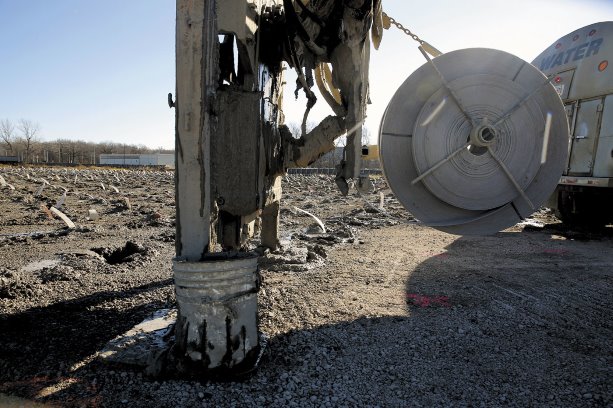
1/2
Wick drains, described as synthetic corrugated sleevelike tubing, are pushed into the alluvial soil by machines called stitchers which create paths for water to escape.
Photo: Windsor-Detroit Bridge Authority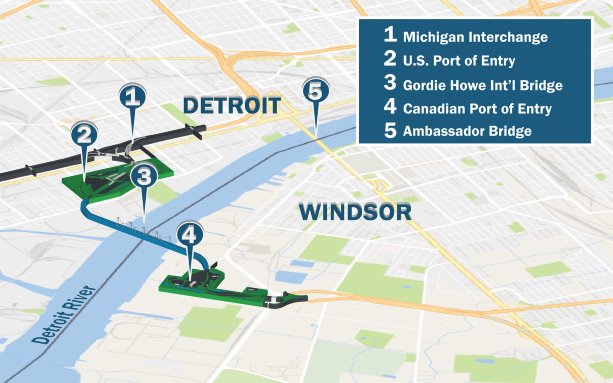
2/2
The Gordie Howe International Bridge will have three Canadian-bound lanes and three U.S.-bound lanes for a total of six. No decision has been made on whether it will be cable-stayed or suspension design but it is expected there will be 850 metres of span with no piers crossing the Detroit River. Michael Cautillo




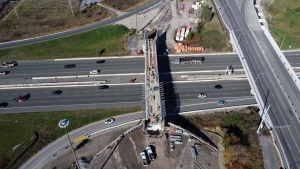
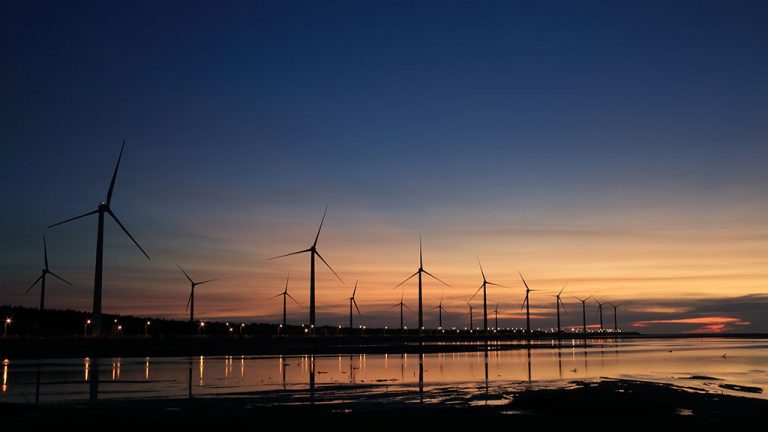



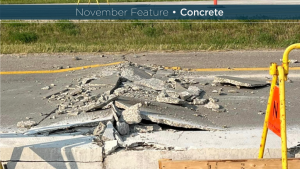
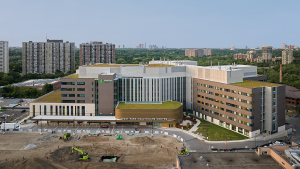
Recent Comments
comments for this post are closed